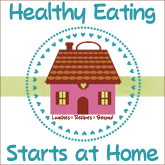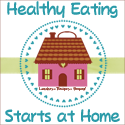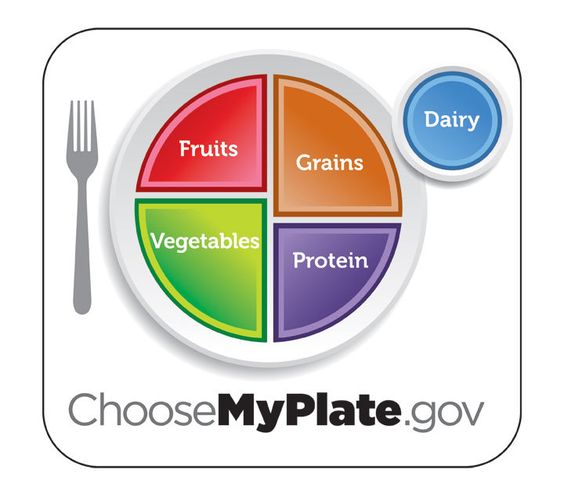 Week 2 Challenge is about eating more whole grain. Honestly, I was quite dumbfounded when whole grain foods were talked about. I didn't even realized that we were actually consuming it for the most part of our meals. Not because we're not a big fan of brown rice and whole wheat or multi-grain breads, doesn't automatically mean we're not whole grains consumers. Mostly we weren't just aware of what we were actually eating are products of whole grains. But with Healthy Eats' January Challenge that we were up to, I researched a bit to be knowledgeable enough on the benefits of whole grains to our body.
Week 2 Challenge is about eating more whole grain. Honestly, I was quite dumbfounded when whole grain foods were talked about. I didn't even realized that we were actually consuming it for the most part of our meals. Not because we're not a big fan of brown rice and whole wheat or multi-grain breads, doesn't automatically mean we're not whole grains consumers. Mostly we weren't just aware of what we were actually eating are products of whole grains. But with Healthy Eats' January Challenge that we were up to, I researched a bit to be knowledgeable enough on the benefits of whole grains to our body.Here are the complete list, as per Wikipedia, to help out people as clueless as me.
- Wheat - commonly available in the form of noodles, rice, breads, cereals, flours, crackers and biscuits.
- Oat - A grain that is a heart-healthy choice. It helps lower cholesterol levels, reduce risk of cardiovascular disease, prevent heart failure, enhance immune response to infections, stabilize blood sugar, and together with other grains substantially lowers type 2 Diabetes risk. It has selenium, which is a powerful anti-oxidant to decrease asthma symptoms, and is associated with a reduced risk for cancer, especially colon cancer, breast cancer. For more info, visit WHFoods. Best example would be an oatmeal and an oatmeal cookie :) SO take oatmeal on breakfast when there's nothing whole grain prepared for lunch or dinner, then a cookie for a snack.
- Barley - Hulled and Dehulled (not Pearl) - It is considered a low glucose-index food (55 or less). So, it's a good alternative to manage diabetes. It has gluten too. For those concerned parties, check with your health care advisor for more informations. I personally love the Barley Lentil Soup. You might want to visit Barley Foods for some recipe help.
- Corn - As mentioned by Healthy Eats, popcorn is a number one candidate for this category. Or, eat a serving of corn kernels or a corn on the cob. Easy-peasy!
- Brown Rice - This is one grain we would have to learn how to eat. It wasn't just as tasty as white rice. Plus it's very difficult to cook it. Every sack has a different cooking technique, or I might just not be as lucky as the majority.
- Farro - commonly as rice and pasta. Here are some recipes I found that are nice to try: Farro Salad with Tomatoes and Herbs and Mediterranean Farro Salad. Both by Food Network's Giada DeLaurentiis.
- Spelt - It is often used as a feed grain for animals. However, it has gained popularity as a dietary grain due to its nutty flavor, high protein and nutrition content. It is similar to wheat in appearance, but it has a tougher husk than wheat, which may help protect the nutrients inside the grain. It contains more protein than wheat, and also has gluten. So it is not suitable for a gluten-free diet.
- Emmer - This might be a good substitution for farro and spelt, since some people would say it is either of the two in Italy. You might want to research further on this one before using it unless you're actually a fan already.
- Einkorn - Here's what I found about Einkorn. Check it out for yourselves. It's very informative and has recipes as well. But I'd like to iterate that Einkorn is not gluten-free because it contains wheat. Like spelt, it is also used in baked goods.
- Kamut - a good source of Selenium, which has a very powerful anti-oxidant capacity. For more informations, visit their site at Kamut Khorasan.
- Rye - commonly in the form of bread. It is worth looking for, not only for their rich, hearty taste, but for their numerous health benefits. Like most grains, rye is available throughout the year. It helps prevent gallstones, and lowers your risk for Diabetes type 2. So instead of eating rolled oats on breakfasts, why not consider rolled rye. Instead of wheat breads, take rye breads. Something I learned and will definitely consider to switch my pantry items. For more information, visit WHFoods.
- Millet - Creamy like mashed potatoes or fluffy like rice, millet is a delicious grain that can accompany many types of food. It is a good source of manganese, phosphorus, niacin and magnesium. It is one of the heart-healthy choices since it is a good source of magnesium. Magnesium has also shown to reduce the severity of asthma, reduce the frequency of migraine attacks, lowers high blood pressure and reduce the risk of heart attack, especially in people with atherosclerosis or diabetic heart disease. Niacin helps lower blood cholesterol. Like Rye, it helps prevent gallstones and lowers the risk for Diabetes type 2. Wow! I've learned and discovered another healthy alternative. Millet might be the bomb for all :)
- Quinoa - Check out my previous blog on this, Meet Quinoa.
- Amaranth - is the perfect grain for people who prefer to maintain a gluten-free, vegan, heart-healthy or diabetic diet. It is a unique ingredient that lends itself to several food applications as well as having a high nutritional profile, which provides several important nutrients that are often difficult to incorporate into a restrictive diet. Amaranth contains large amounts of dietary fiber, iron, and calcium as well as other vitamins and minerals. It also has naturally high amounts of lysine, methionine and cysteine combined with a fine balance of amino acids making it an excellent source of high quality, balanced protein, which is more complete than the protein found in most grains. In addition, it is also very low in sodium and contains no saturated fat. It is organically grown and is naturally Non-GMO. It makes a great alternative to rice and potato-based products. For more info, visit Nu-World Foods.
- Triticale - It is a unique hybrid of wheat and rye. Its name triticale is derived from the combination of the 2 scientific names - wheat (triticum) and rye (secale). It is self pollinating like wheat. It is highly nutritious and a great source of long term energy. But if you don't exercise, it will form a mucus in oyur system that will reduce your energy, concentration, and health. So I guess this is good for people who are like exercise machines, that constantly move and work-out in a regular basis. Otherwise, opt for other grains.
- Teff - Check this out: Chet Day's Health and Beyond Online for important nutritional facts and some recipes as well.
- Sprouted Grains - Sprouted grain differs from whole grain in three fundamental aspects: 1) sprouting activates food enzymes; 2) sprouting increases vitamin content, and 3) sprouting neutralizes anti-nutrients like phytic acid (storage form of phosphorus) which binds up minerals preventing your ability to fully absorb them. They are suitable for quick breads, cookies and cakes, where sourdoughs and soaked flours are not.
- Buckwheat - Its nutritional benefits is somewhat similar to rye and oats. For more infos, check out WHFoods.
I hope this helps. I was so glad I did this research that enlightened me with the different kinds of grains locally available. Some were actually incorporated in the foods we purchase daily. We just have to be diligent on reading labels.
Enjoy eating healthy!






















